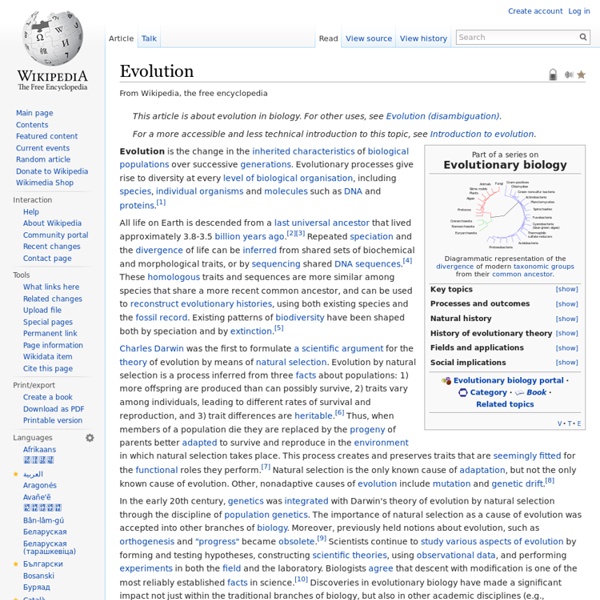Meme
Thought or idea that can be shared, in analogy to a gene A meme (/miːm/ MEEM[1][2][3]) is an idea, behavior, or style that spreads from person to person within a culture—often with the aim of conveying a particular phenomenon, theme, or meaning represented by the meme.[4] A meme acts as a unit for carrying cultural ideas, symbols, or practices, that can be transmitted from one mind to another through writing, speech, gestures, rituals, or other imitable phenomena with a mimicked theme. Supporters of the concept regard memes as cultural analogues to genes in that they self-replicate, mutate, and respond to selective pressures.[5]
Beanbag genetics
Mendel first studied pea plants. The characteristics of the peas in different generations could be tracked by using beans. Beanbag genetics is a conceptual model of genetics which was used by early Mendelians, who used to keep colored beans in bags as a way of tracking Mendelian ratios. To be able to understand beanbag genetics, the meaning of population has to change. Population is no longer a group of individuals in an area but are all the Alleles in an area that assort and segregate separately. All of the alleles become the gene pool.
W. D. Hamilton
William Donald Hamilton, FRS (1 August 1936 – 7 March 2000) was an English evolutionary biologist, widely recognised as one of the most significant evolutionary theorists of the 20th century.[1][2] Early life[edit] Hamilton was born in 1936 in Cairo, Egypt, the second of seven children.
Kin selection
The evolutionary strategy that favours the reproductive success of an organism's relatives, even at a cost to the organism's own survival and reproduction The co-operative behaviour of social insects like the honey bee can be explained by kin selection. Kin selection is the evolutionary strategy that favours the reproductive success of an organism's relatives, even at a cost to the organism's own survival and reproduction.[1] Kin altruism can look like altruistic behaviour whose evolution is driven by kin selection. Kin selection is an instance of inclusive fitness, which combines the number of offspring produced with the number an individual can ensure the production of by supporting others, such as siblings.
Green-beard effect
The Green-beard effect is a form of selection in which individuals with genes that produce unique observable traits select individuals with the specific trait and thereby the same gene. In this illustration individuals selectively mate with individuals of the same head color. The idea of a green-beard allele was proposed by William D. Hamilton in his articles of 1964,[1][2] and got the name from the example used by Richard Dawkins ("I have a green beard and I will be altruistic to anyone else with green beard") in The Selfish Gene (1976).[3][4] A green-beard effect occurs when an allele, or a set of linked alleles, produce three expressed (or phenotypic) effects: The carrier of the gene (or a specific allele) is essentially recognizing copies of the same gene (or a specific allele) in other individuals.
Sherwood Washburn
Sherwood Larned Washburn ((1911-11-26)November 26, 1911 – (2000-04-16)April 16, 2000), nicknamed "Sherry", was an American physical anthropologist and pioneer in the field of primatology, opening it to the study of primates in their natural habitats. His research and influence in the comparative analysis of primate behaviors to theories of human origins established a new course of study within the field of human evolution. Biography[edit] He was born and raised in Cambridge, Massachusetts to Henry Bradford Washburn, Sr., dean of the Episcopal Theological School in Cambridge, and Edith Buckingham Hall. He was the younger brother of Henry Bradford Washburn. In his youth, Washburn took a keen interest in the field of natural history, and during school vacations worked with exhibits and collections in Harvard’s Museum of Comparative Zoology.
Evolutionarily stable strategy
First published as a specific term in the 1972 book by John Maynard Smith,[1] the ESS is widely used in behavioural ecology and economics, and has been used in anthropology, evolutionary psychology, philosophy, and political science. History[edit] Maynard Smith mathematically formalised a verbal argument made by Price, which he read while peer-reviewing Price's paper.
Polyandry
Polyandry (; from Greek: πολυ- poly-, "many" and ἀνήρ anēr, "man") is a form of polygamy in which a woman takes two or more husbands at the same time. Polyandry is contrasted with polygyny, involving one male and two or more females. If a marriage involves a plural number of "husbands and wives" participants of each gender, then it can be called polygamy,[1] group or conjoint marriage.[2] In its broadest use, polyandry refers to sexual relations with multiple males within or without marriage. Of the 1,231 societies listed in the 1980 Ethnographic Atlas, 186 were found to be monogamous; 453 had occasional polygyny; 588 had more frequent polygyny; and 4 had polyandry.[3] Polyandry is less rare than this figure suggests, as it considered only those examples found in the Himalayan mountains (28 societies). More recent studies have found more than 50 other societies practicing polyandry.[4] Polyandry is believed to be more likely in societies with scarce environmental resources.



